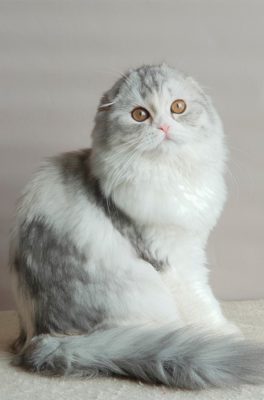Highland Fold
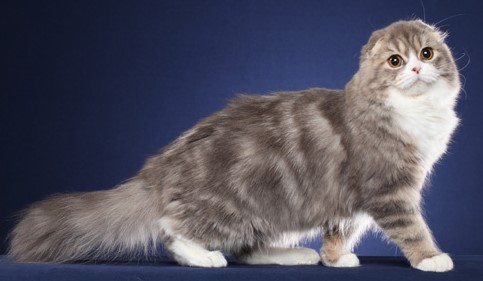
Representatives of the breed are calm and tidy pets. They learn quickly and lend themselves well to training. Cats need good food, regular walks, and the love of the family to be happy. Highland Folds will not tolerate aggression or anger from their owner. They are peaceful cats who are capable of caring for others. Quickly find common ground with children and other animals. They also easily come into contact with guests.
Table of Contents
Breed Information
| Origin | Scotland |
| Size | Up to 30 cm |
| Weight | 3-5 kg |
| Fur Type | Semi-long-haired |
| Color | Smokey, color point, tortoise, bicolor, tabby, and others |
| Lifestyle | Indoors |
| Lifespan | 15-17 years |
| FIFe Classification | – |
| WCF Classification | Group 2: “Semi-long-haired” Breed designation – SFL |
| TICA Classification | SS |
| Group | Long-haired cats, cats for apartments |
| Price | $300-600 |
Breed Photos
Origin History
The first Hyland Folds (Scottish Fold Longhairs or Scottish Lop-Eared Longhairs) were born in Scotland in the 70s of the 20th century. Though in the 17th century, the Chinese tried to breed kittens with drooping ears. But the local population was indifferent to lop-eared pets, and after 1796, mentions of them disappeared.
The Scottish breed has the blood of Persians and Britons. The breeders were surprised that short-haired parents occasionally had shaggy offspring. For years, they wondered if this was a unique sub-species of the breed or an unfortunate selection. Because of this, for a long time, felinological organizations did not recognize the breed. But in the 1980s, some international associations officially named Scottish Lop-Eared Long-Eared as a separate breed.
Today, Highland Folds are not particularly popular, despite their regal appearance. Still, not all felinological organizations recognize the animals. And colored-point cats are not allowed to participate in exhibitions at all.
Appearance
Although Scottish lop ears have a medium-sized build, they look rather large because of their half-length coat. Cats resemble a soft, fluffy toy and are recognized as the best pets. They have a supple back with a muscular neck and a well-developed chest. A large rounded head with a shortened muzzle. The small ears are set wide and bent forward. The more closely they fit the head, the more valuable they are representative of the breed. Big eyes match the shade of the coat. The thick long tail is covered with fluffy fur. Hair of Highland Folds is acceptable in any color: smoky, color-point, tortoiseshell, bicolor, tabby, etc.
Character
Representatives of the breed are calm and tidy pets. They learn quickly and lend themselves well to training. Cats need good food, regular walks, and the love of the family to be happy. Highland Folds will not tolerate aggression or anger from their owner. They are peaceful cats who are capable of caring for others. Quickly find common ground with children and other animals. They also easily come into contact with guests.
If the owner is busy with business, the Scottish Lop-Eared Longhair will sit next to him and wait until free. The peculiarity of the breed is that it can sit with its paws folded on its belly.
Care
Because of their long hair, pets need careful grooming. Comb the coat at least once a day. During an active shedding period, use a furminator and double or triple the number of treatments. Bathe your pet as it gets dirty, but no more often than once every one to two months. For bathing procedures, use a special shampoo for long-haired cats.
In general, there is no regular discharge from the eyes and nose of a Highland Fold. If the situation is the opposite, see your veterinarian. As a preventive measure, you can wipe the eyes with chamomile decoction. Also, remember to clean their ears once or twice a week with a cotton pad. Wear a flea collar and use a cat leash for walks.
Education
Their natural learning ability and high intelligence allow cats to quickly remember where the litter box, food, and other objects are located. Highland Folds are wise animals, so they will ask for requests or walks affectionately and without making loud noises. Do not use aggression on them, which does not dispose of your pet to you. They love long active games, and this is the best way to teach the basic cat commands.
Common Diseases
Genetic diseases of Scottish longhair cats include polyarthritis, osteochondrodysplasia, diabetes, and gastritis. Also, in the absence of physical activity and walks in the fresh air, animals may have problems with the musculoskeletal system. The accumulation of hair in the stomach causes diseases of the digestive system. With the help of special medications prescribed by a specialist, it is worth regularly clearing the pet’s stomach.
Nutrition
The appearance of the Highland Fold is directly dependent on nutrition. For a beautiful and soft coat, the pet’s diet should be balanced and with a full complex of vitamins and minerals. Feed young kittens four times a day, and as they grow older, reduce the diet to two times a day. Choose among natural products:
- meat and by-products (beef, veal, chicken);
- buckwheat, rice, oatmeal;
- cottage cheese and kefir;
- cabbage, beets, carrots;
- greens: parsley, spinach, arugula, dill, etc.
A few drops of vegetable oil can be added to the animal’s food. It promotes the absorption of vitamins and minerals. As a treat, it is acceptable to give apples or low-fat biscuits.
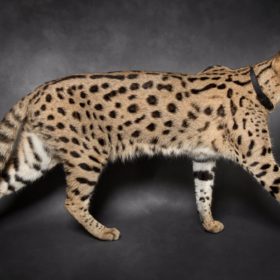 Savannah
Savannah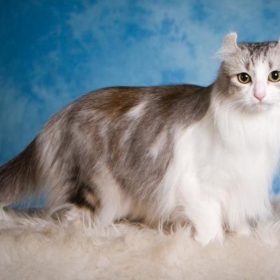 American Curl Longhair
American Curl Longhair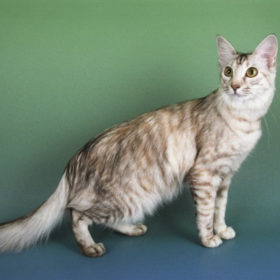 Oriental Longhair
Oriental Longhair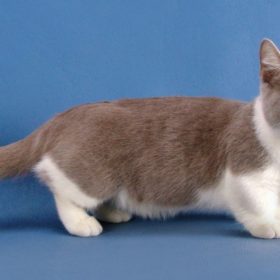 Munchkin Shorthair
Munchkin Shorthair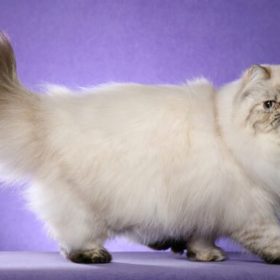 Persian (Colorpoint)
Persian (Colorpoint)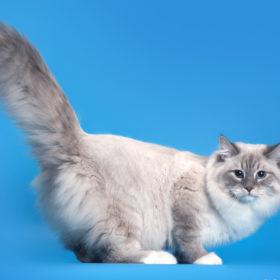 Neva Masquerade
Neva Masquerade
